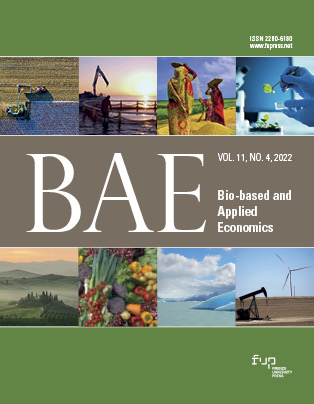Published 2023-05-03
Keywords
- Systems thinking,
- Causal loop diagrams,
- value network analysis,
- wicked problems,
- agri-food systems
- socio-ecological systems ...More
How to Cite
Copyright (c) 2022 Domenico Dentoni, Carlo Cucchi, Marija Roglic, Rob Lubberink, Rahmin Bender-Salazar, Timothy Manyise

This work is licensed under a Creative Commons Attribution 4.0 International License.
Abstract
Societal actors across scales and geographies increasingly demand visual applications of systems thinking – the process of understanding and changing the reality of a system by considering its whole set of interdependencies – to address complex problems affecting food and agriculture. Yet, despite the wide offer of systems mapping tools, there is still little guidance for managers, policy-makers, civil society and changemakers in food and agriculture on how to choose, combine and use these tools on the basis of a sufficiently deep understanding of socio-ecological systems. Unfortunately, actors seeking to address complex problems with inadequate understandings of systems often have limited influence on the socio-ecological systems they inhabit, and sometimes even generate unintended negative consequences. Hence, we first review, discuss and exemplify seven key features of systems that should be – but rarely have been – incorporated in strategic decisions in the agri-food sector: interdependency, level-multiplicity, dynamism, path dependency, self-organization, non-linearity and complex causality. Second, on the basis of these features, we propose a collective process to systems mapping that grounds on the notion that the configuration of problems (i.e., how multiple issues entangle with each other) and the configuration of actors (i.e., how multiple actors relate to each other and share resources) represent two sides of the same coin. Third, we provide implications for societal actors - including decision-makers, trainers and facilitators - using systems mapping to trigger or accelerate systems change in five purposive ways: targeting multiple goals; generating ripple effects; mitigating unintended consequences; tackling systemic constraints, and collaborating with unconventional partners.






